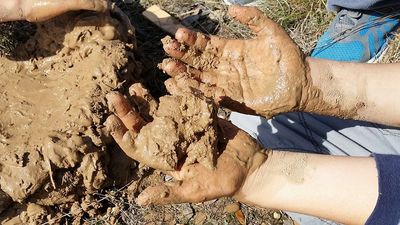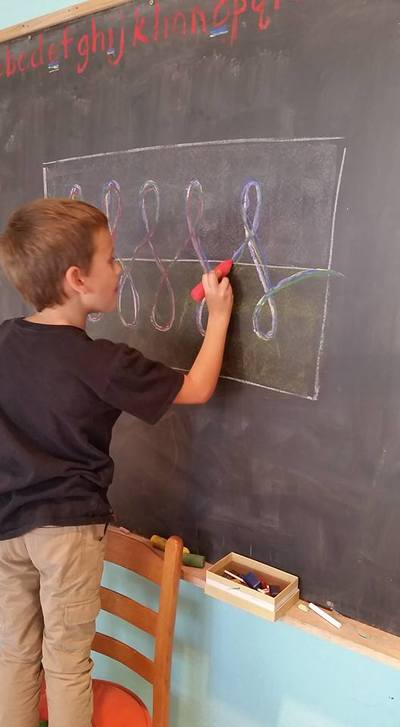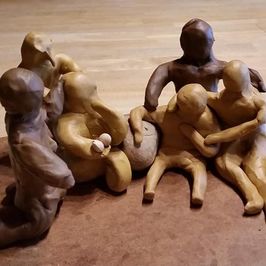Experience the Micro School Difference
School on the Rise is an elementary micro-school located on eight beautiful acres just outside Austin city limits, in southwest Travis County, deep in the heart of Texas. It is designed for families who have an interest in alternative education, specifically Waldorf education, but who are seeking small class sizes, a spirit of innovation, a relaxed and cheerful atmosphere, plenty of time in nature, and considerably less homework.
Our learning environment is personable, thoughtful, often challenging, and always welcoming. Classes are intentionally kept small so teachers and students have many interactions throughout the day…as individuals. Opportunities for personalized learning are maximized and no child is lost in the crowd.
Our learning environment is personable, thoughtful, often challenging, and always welcoming. Classes are intentionally kept small so teachers and students have many interactions throughout the day…as individuals. Opportunities for personalized learning are maximized and no child is lost in the crowd.
Allowing the Child to Unfold
|
Inspiring Joyful Learning
|
Daily Rhythm
|
|
Children naturally love to move and be creative. They learn best when we use movement and creative activities to invigorate the classroom. Using songs and games to practice math and having students make drawings to accompany their writing, are examples of ways that school can be fun instead of stressful. Warm, friendly and trusting relationships between students and teachers allow for the true essence of the children to come forth and shine.
|
The days and weeks are structured to provide both consistency and variety. Each day begins with vigorous physical movement, singing and recitation, and then the "main lesson" where an academic theme is presented and worked with over a period of weeks. The remainder of each day is spent in academic practice periods, artistic classes, and recesses.
A Developmental Approach
Our approach is based on respect for the developmental stages of the growing student. The curriculum is designed to meet these stages and to harmoniously integrate each student's thinking, feeling, and willing.
|
Imagine the PossibilitiesImagine a school that shares your values for nurturing your children. A school that allows them the time and space they need to learn in an unhurried, unstandardized environment. A school that challenges them to imagine new ideas, solve problems in new ways and see the world in a new light. A school that inspires them to trust themselves, develop their own gifts and reach beyond the expected. What you’ve imagined is School on the Rise. |
Learning that Evolves as the Child Grows
ThinkingOur teachers often speak of building the capacity for thinking." All aspects of the curriculum -- the artistic classes as well as the academic ones -- work together toward that goal. Modern brain research shows that the brain is still developing well into a person's 20's, so we could say that true thinking really only becomes possible then, and what we see before then only hints at what thinking can be.
Creative thinking may be the single most important skill for the 21st century. The constant "diet" of artistic and movement classes in our curriculum helps the students develop a habit of looking at every task or situation from multiple perspectives. In the arts, students must bring both their feelings and their will into their thinking. |
FeelingWhile questions of fact can be answered through thinking, most of life’s most important questions involve our values and preferences. To these questions we find our answer, not the answer, and to find them we must use our feelings. We all know that thinking skills can be honed. So too can the sensitivity and reliability of our feelings be increased over time. Artistic activities are an important way to cultivate a healthy feeling life. Similarly, a learning environment where students experience joy, respect, empathy, humor, and camaraderie contribute to healthy feelings and successful outcomes.
|
Willing“What is the will, and how do we properly cultivate it?” This is a core question for us. The best ideas and the noblest feelings remain unrealized unless we have the will to bring them into the world. We can easily see that an education full of doing strengthens the will. But a will that is merely strong is not complete. It is represented as the bull in the china shop. A complete and effective will must also be tempered by “not-doing”: listening to others requires not interrupting, working carefully requires not rushing, learning a new skill requires perseverance, etc. The task of properly educating the will takes countless forms.
|
We Would Love to Have You Visit Soon!
School on the Rise values and supports diversity in its many dimensions, including but not limited to each person’s unique combination of race, ethnicity, gender identity, sexual orientation, socio-economic status, age, physical ability, learning style, religious beliefs, political views, perspectives, and life experiences.
By embracing diversity, we expand our understanding of others. By reflecting on our inherent personal biases, we stimulate our own learning and growth. By doing both, we connect with one another and the world. We believe this is healthy and key to moving beyond simple tolerance, building a safe, positive, and nurturing environment that affirms each individual’s sense of belonging, dignity, and significance.
[Thanks and Acknowledgment to High Meadow School for borrowing heavily from their Diversity Statement]
By embracing diversity, we expand our understanding of others. By reflecting on our inherent personal biases, we stimulate our own learning and growth. By doing both, we connect with one another and the world. We believe this is healthy and key to moving beyond simple tolerance, building a safe, positive, and nurturing environment that affirms each individual’s sense of belonging, dignity, and significance.
[Thanks and Acknowledgment to High Meadow School for borrowing heavily from their Diversity Statement]









